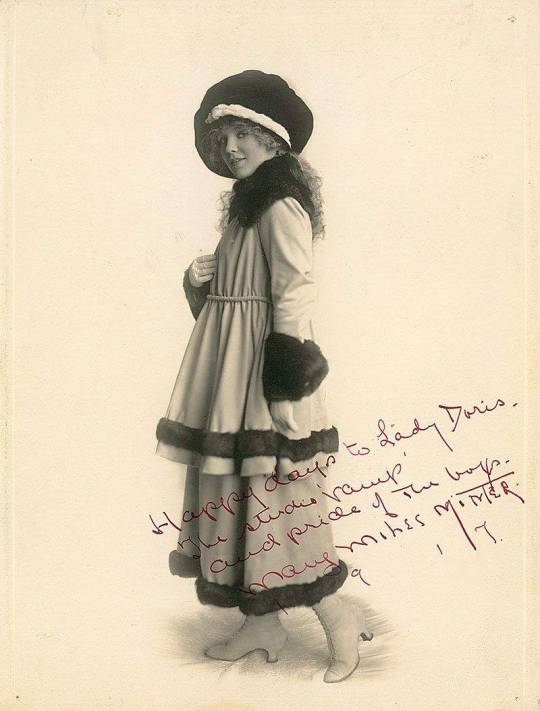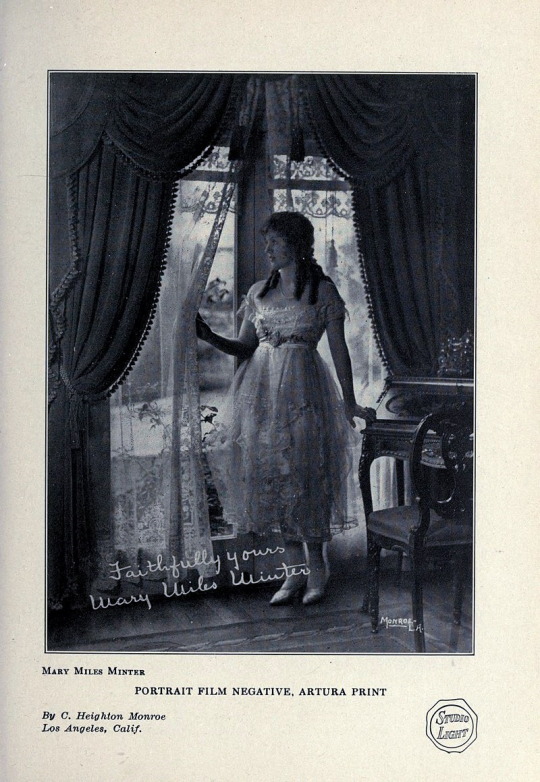#Mary miles minter
Explore tagged Tumblr posts
Text

Mary Miles Minter ❤️
#silent film#silent era#silent actress#mary miles minter#silent cinema#1920s cinema#silent film actresses#vintage beauty
253 notes
·
View notes
Text

Mary Miles Minter, 1910s
213 notes
·
View notes
Text

Mary Miles Minter (born Juliet Reilly; April 25, 1902 – August 4, 1984) was an American actress, and one of the leading ladies who established the early Hollywood star system. She appeared in 53 silent films from 1912 to 1923.
69 notes
·
View notes
Text

Mary Miles Minter (April 25, 1902 - August 4, 1984)
23 notes
·
View notes
Text

Mary Miles Minter (Shreveport, Louisiana, 25/04/1902-Santa Monica, California, 4/08/1984).
13 notes
·
View notes
Text

Anne Shirley (Mary Miles Minter) and Matthew Cuthbert (Frederick Burton).. Anne Of Green Gables (1919).
8 notes
·
View notes
Text















Silver Screen magazine, January 1939
#pretty threatening#studio system#hollywood#old hollywood#classic hollywood#studio#film studio#movie studio#studio power#1930s#1939#1938#mary astor#constance bennett#eric von stronheim#marlene dietrich#fatty arbuckle#clara bow#thelma todd#paul bern#mary miles minter#duncan renaldo#katharine hepburn#william desmond taylor#murder#suicide#cover up#la#margaret sullavan#janet gaynor
2 notes
·
View notes
Text


mary miles minter, 1917 <3
2 notes
·
View notes
Text

#pop culture#film#cinema#hollywood#movie#review#substack#film review#history#movie review#2023 movies#brooke shields#pretty baby#blue lagoon#Mary miles minter#feminism#documentary
4 notes
·
View notes
Text






#William Desmond Taylor#true crime#Mabel Normand#Margaret Gibson#Mary Miles Minter#photography#black and white#Hollywood#unsolved
1 note
·
View note
Text

Lady of The Day 🌹 Mary Miles Minter ❤️
#silent film#silent era#silent actress#mary miles minter#silent cinema#1920s cinema#silent film actresses#vintage beauty
43 notes
·
View notes
Text
youtube
Just a reminder how adorable, talented, and smart Justin Root is. I love his deep dive location tours around Hollywood, especially this 3-parter concentrating on the silent movie era and one of its biggest murder mystery scandals.
#justin root#old hollywood#scandal#murder mystery#mabel normand#mary miles minter#mack sennett#movies#silent era#hollywood#Youtube
0 notes
Text

Mary Miles Minter in Studio Light Magazine 1921.
23 notes
·
View notes
Text

Mary Miles Minter (April 25, 1902 - August 4, 1984)
20 notes
·
View notes
Text

Mary Miles Minter-Allan Forrest "A bit of jade" 1918, de Edward Sloman.
6 notes
·
View notes
